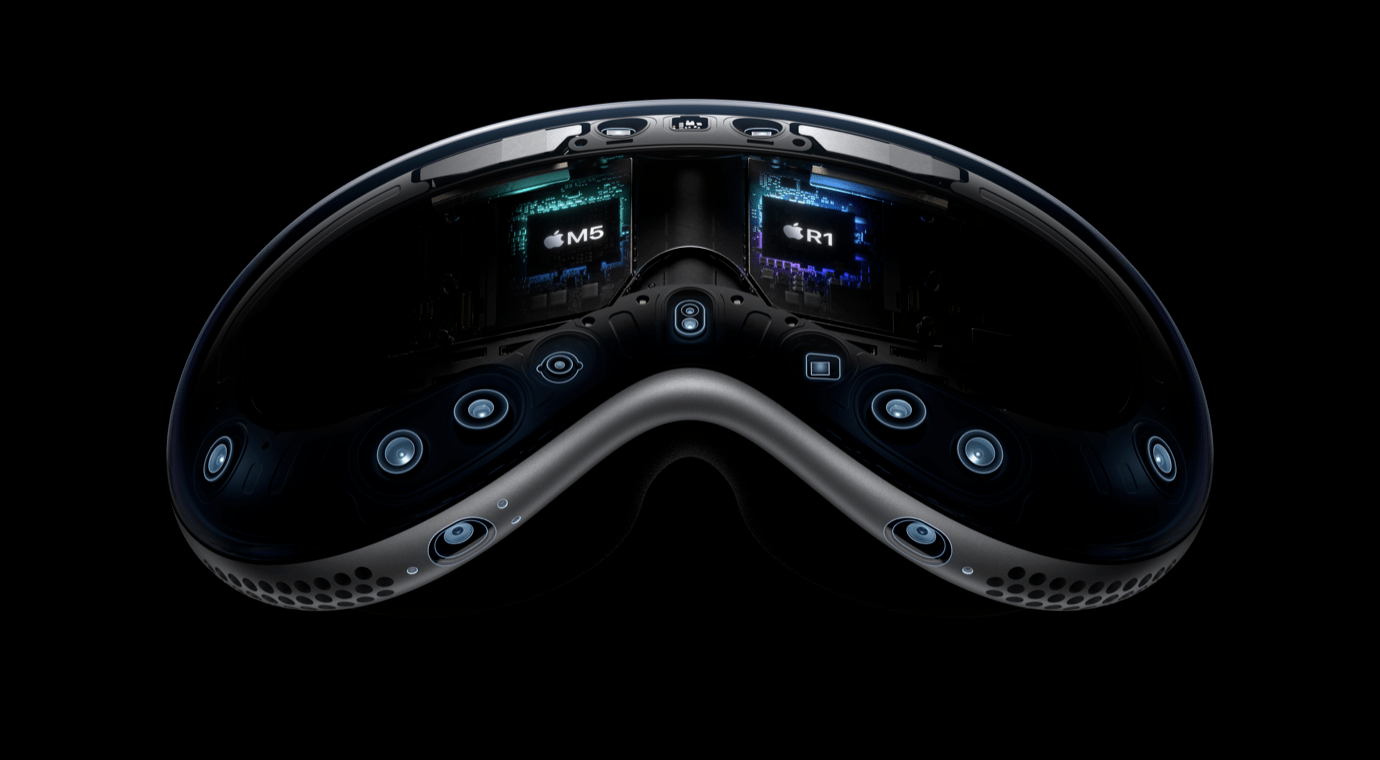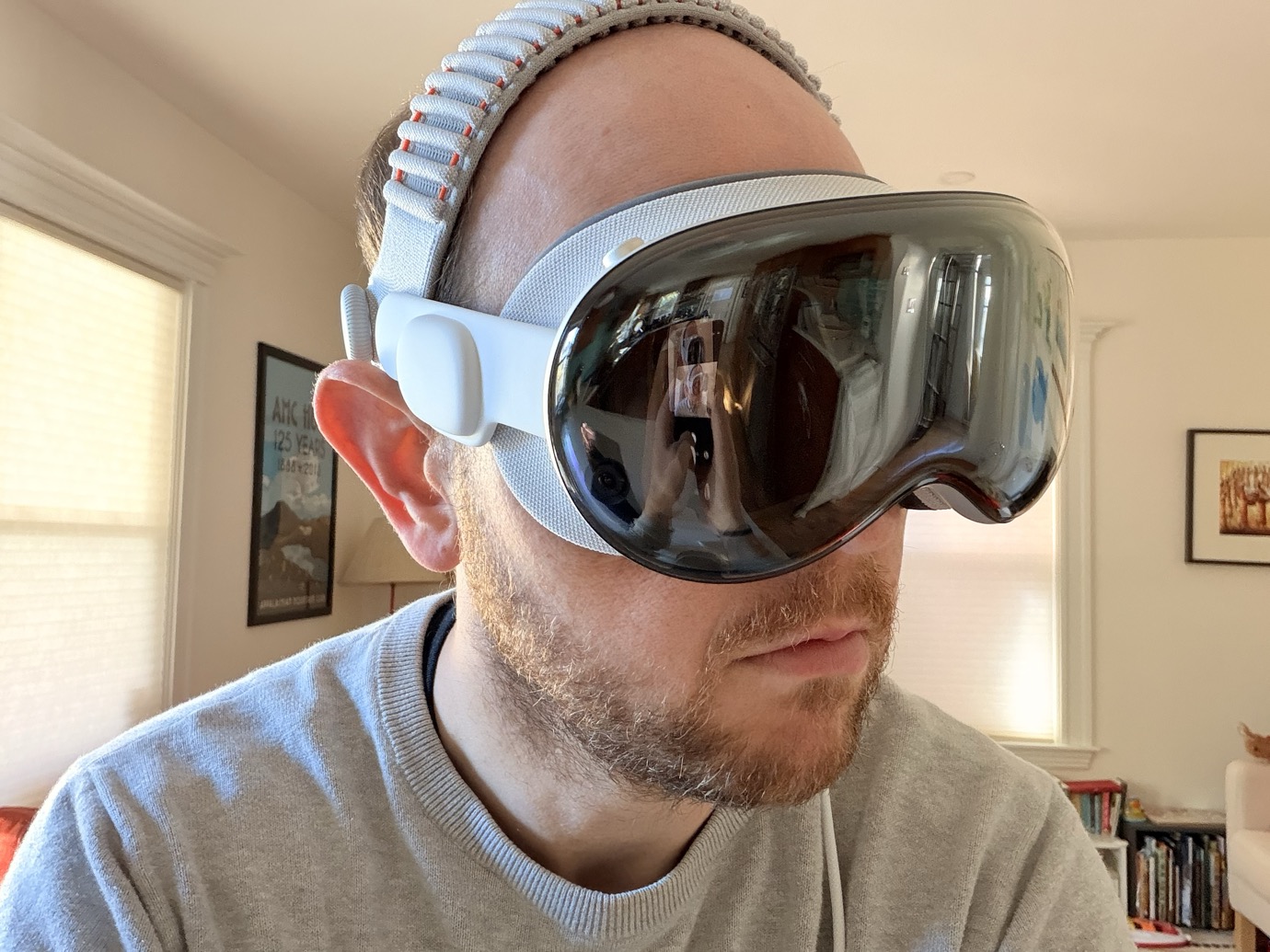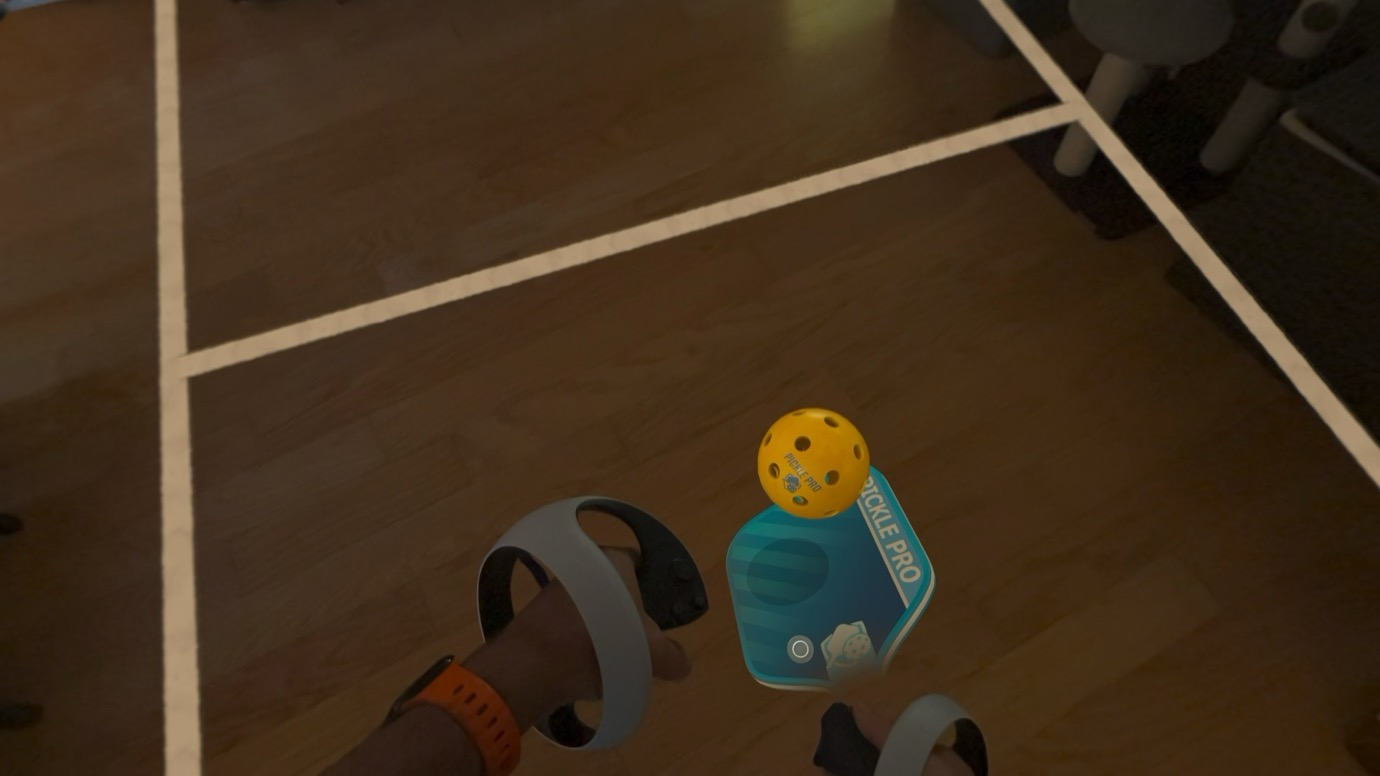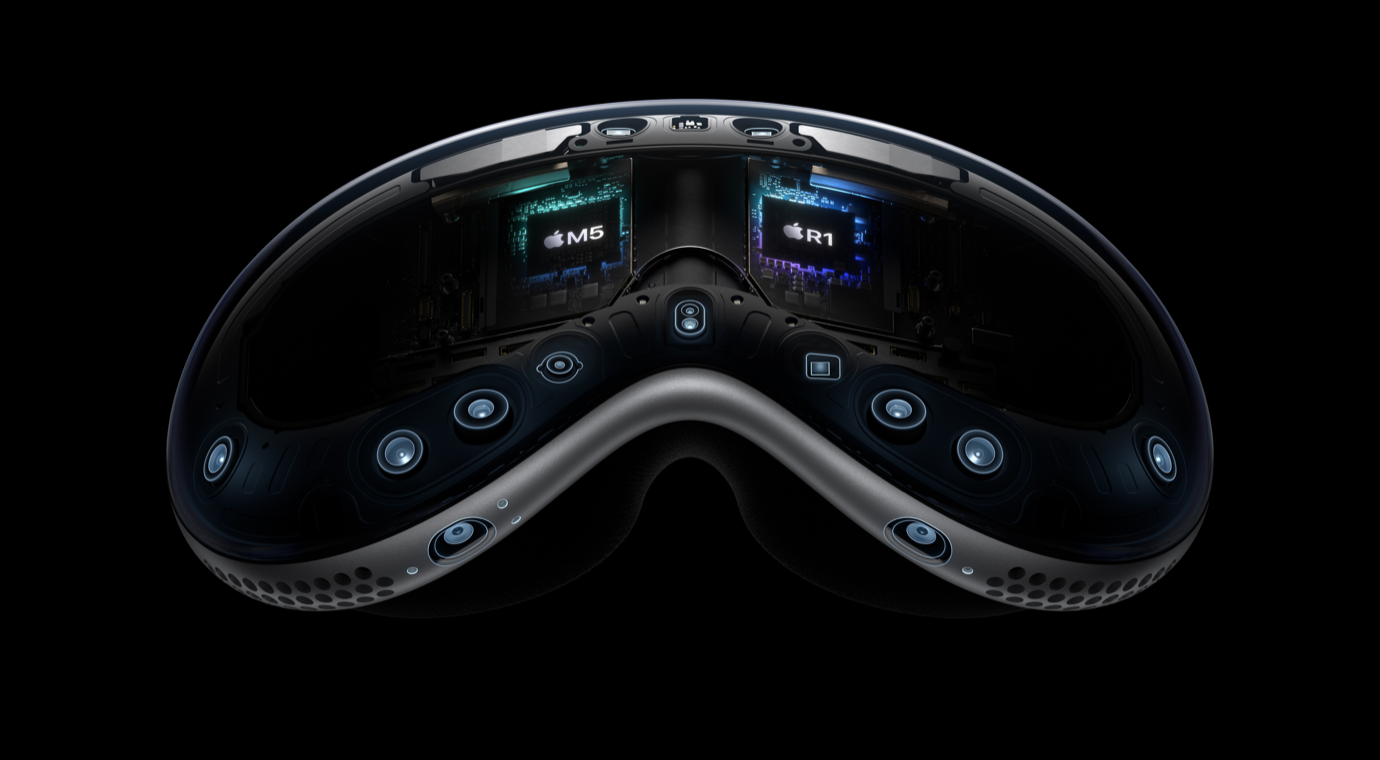
Did the Vision Pro need an update?
On the one hand, no: Apple’s cutting-edge VR computer hasn’t exactly taken the world by storm. It’s a view of the future that, at its current size and price, doesn’t have much of a place in the present.
On the other hand, it turns out that the M2 processor that powered the Vision Pro was underserving some of its advanced hardware. Apple also probably needed to stop making M2 chips, and the M5 is fresh out of the oven. Upgrading the Vision Pro allows the company to keep it around without a major overhaul.
The Vision Pro’s two amazing postage-stamp-sized OLED displays benefit greatly by being driven by an M5. We already knew that rendering every single pixel on those displays was impossible—that’s why Apple used foveated rendering, a technique that renders whatever you’re looking at at a much higher resolution than the stuff in your peripheral vision. (Because of how your brain works, you don’t notice!) If you take a Vision Pro screenshot, you’ll notice that only a certain portion of the image is rendered at high resolution—that’s foveated rendering in action.
Anyone who has popped the Vision Pro into developer mode in order to take a full-resolution screenshot knows what happens when the device tries to render every single pixel at full quality: it stutters badly. The displays are willing, but that’s an enormous amount of pixels, even for an M2, so Apple built the foveated rendering system.
Except… it turns out that even that system didn’t actually render at the full resolution of the displays. Because with the M5 version of the Vision Pro, Apple says it’s rendering 10% more pixels than before, all in the foveated rendering area. In essence, everything is a little bit clearer in the new version of the Vision Pro. Though you probably won’t notice in most contexts—reality is fuzzy and messy—in Mac Virtual Display mode, the M5 model gets much closer to the ultra-crisp resolution we expect from our Mac displays. (It’s still not quite as clear as my Apple Studio Display, but it’s definitely clearer.)
Apple also says that it can now drive the displays, in certain circumstances, at up to 120Hz. (I believe frame rates used to be more in the 90Hz range.) The circumstances seem to be primarily when you’re using the device in pass-through mode, so that your surroundings move with less latency and more fluidity. I have to admit that I didn’t notice any major differences in the not-very-well-lit rooms of my house, but I think I could notice the improvement in brighter light. (It’s hard to tell and almost impossible to compare.)
There are a few places where the speed of the M5 processor is readily apparent, most notably when the system is churning to build a new Spatial Persona. It’s funny, but generally, I have never found myself feeling that the pure processing speed of the Vision Pro is letting me down. It feels fast, even the M2 model. Clearly, the real power is being expended to maintain the illusion of reality on those OLED displays, and that’s why most of the benefits in this chip upgrade are in rendering.
Overall, the Vision Pro continues to be what it has always been—an expensive look at the future that Apple hopes to build, but with limited practical value in the present. As I wrote in my original review: “There are very few use cases for which I can say that, yes, the Vision Pro is a smart investment at $3499. Getting a taste of the future isn’t cheap, and it’s not especially practical, but it’s such a rare opportunity that it can sometimes be worth it anyway.”
Apple keeps pushing visionOS forward, and the hardware is now updated to run for a few more years. Unlike literally every other product Apple makes, the Vision Pro is not meant for regular consumers. It’s a place for people to dream on what future products might be like, whether they’re VR computers or subtle AR glasses. It’s a way for Apple to build the operating system and platform that might drive such devices in the 2030s, for filmmakers and sports leagues to experiment with immersive experiences, for developers to imagine how they might build software for such platforms, and for brave users to mess around with the most high-tech device Apple has ever built, despite it not having a lot of strong use cases.
You still don’t need a Vision Pro, but every time I put mine on, I keep looking for reasons not to take it off. I’m glad it continues pushing the hardware forward, but it’ll need to be a fraction of the price and weight before it could possibly gain broad appeal.—Jason Snell
Band together
[Here’s Dan Moren with his experience of using the new Vision Pro Dual Knit Band.]

While most of the M5 Vision Pro’s updates aren’t available to owners of the previous generation, there’s one notable exception: the new Dual Knit Band, which comes standard with the new Vision Pro and is available separately for $99.
Apple, of course, included two separate bands along with the original M2-powered Vision Pro: the Solo Knit Band and the Dual Loop Band. Those dissatisfied with those first-party options have experimented with a variety of other solutions over the years, from third-party add-ons like Belkin’s head strap to adapters that let you Frankenstein a pair of Solo Knit Bands together.
So, is the new band—which is also the only one included with new Vision Pros—the one (er, two?) to rule them all?
For the past several months, I’ve relied on the Dual Loop Band as my go-to Vision Pro setup; it isn’t bad, once you get it all sized, but it’s certainly more utilitarian than elegant. I was eager to try the Dual Knit Band and see if it could displace the reigning champ.
The first thing you’ll notice about the Dual Knit Band is that it’s heavy. Noticeably heavy. It reminded me a bit of a very nicely designed leg weight. At 6.9 ounces / 195 grams, it is—according to my new favorite website—about the weight of an adult hamster or four cinnamon Pop-Tarts. By comparison, the original Solo Knit Band is 1.75 ounces / 49 grams (an average medium-sized egg), and the Dual Loop Band comes in at 1.35 ounces / 38 grams (about 15 pennies).
It might seem counterintuitive to add more weight to a device of which one of the main criticisms has been that it’s too heavy, but the goal here is to provide a counterweight to the Vision Pro itself, and, yes, it does work. But that’s not to say that it totally fixes the problem: end of the day, you’ve still got more weight on your head. I was able to wear the Vision Pro for a few hour-plus stretches with the Dual Knit Band and not feel it too much, but it’s still not a device that you’re going to have on all day.
The band’s design is appropriately Apple-y. Swapping bands on the Vision Pro is as simple as changing out Apple Watch bands: pull on the orange tabs, and the old band pops off. Then just click the new ones—the magnets do the rest.
Perhaps the best part of the entire band is the Fit Dial. Based on the same design as the Solo Knit Band, where turning the knob loosened or tightened the band, the Dual Knit Band’s dial does double duty to adjust both the rear band and top band. In order to switch between the two, you pop it outwards—not unlike how you’d set the time on an analog watch. It’s got a satisfying click in both directions, and the dial’s nature means that it’s easier to adjust while you’re wearing it, compared to the Dual Loop Band, where unstrapping the velcro always felt a little bit like you were in danger of the Vision Pro sliding off your head.
After four or five days with the Dual Knit Band, I think I’ve finally got it set right for me. I’ve got a fairly small head, and it was possible to get the band pretty snug. Sometimes I still feel like the headset isn’t quite well seated on my face, which puts extra pressure on my cheekbones, but that’s not necessarily about the band itself. Ultimately, there’s only so much a band can do to compensate for a roughly 750-gram device you wear on your face. After all, that’s a 7-8 week old kitten. Albeit less fuzzy.
Is the Dual Knit Band worth a $99 upgrade for existing Vision Pro users? Let’s be honest, if you’ve struggled to find a comfortable band and you’ve already splashed out $3,500 for the device, another $99 is probably not going to break the bank. But if you’re happy with what you’ve got, it’s probably not going to change the overall experience dramatically. —Dan Moren
Take control of hand controllers
 Playing some virtual pickleball with PSVR2 controllers.
Playing some virtual pickleball with PSVR2 controllers.
While not quite an M5 feature, visionOS 26 also brings support for Sony PSVR2 hand controllers. Adding OS support for VR controllers is important to the long-term building out of the platform, because it adds another possible type of content: games. As I wrote a year ago:
And if Apple wants to get serious about expanding and growing the Vision product line, it needs to get over one particular choice it made in launching it. The company was clearly so proud of its advanced hand-tracking interface that it shipped the Vision Pro with no additional input devices. And I get it! “If you see hand controllers, they blew it” could have been one of the catchphrases of the Vision Pro development process. A headset shouldn’t require add-on controllers to be usable.
But just as the Mac eventually got arrow keys (despite omitting them from the first Mac keyboard to encourage using the mouse) and the iPad got an Apple Pencil (despite being a touch-first interface), it’s time for Apple to get over itself, and either build precision hand controllers for visionOS or build an API and make a partnership with a third-party accessory developer.
The fact is, lots of games and game-adjacent apps require a level of precision that Apple’s (excellent) hand tracking just can’t muster. Every Vision Pro game I’ve played that featured hand tracking has been a sloppy mess. I get that Apple wanted to show off its hand tracking and lean into “spatial computing” to send the message that the Vision Pro is not a game console but a serious device, but in doing so, it turned its back on the most popular category of entertainment software in the entire VR headset category.
Over the weekend I picked up a PSVR2 and paired the controllers to the M5 Vision Pro. Right now there are only four games that apparently support them, and one of those (Pickle Pro) is available only as a beta.
Here’s what I learned: Adding the hand controllers is the first step, but the next step is up to software developers. I had a pretty good experience with Pickle Pro, which let me play pickleball with a virtual opponent on the other side of a magical portal. For the most part, my hand gestures were tracked accurately.
Ping Pong Club, an app that I struggled to use and blamed on the Vision Pro’s hand tracking, is almost as frustrating with an actual hand controller. So now I’m thinking it’s an issue with that app more than it is the tracking. It certainly couldn’t hold a candle to Eleven Table Tennis, an app for the Meta Quest that is rock-solid with its emulation of a ping-pong table and hand-controller-driven paddle. You can pick up a Quest 3 for $500, which is a lot cheaper than $3750, if you want to just play a good game of virtual table tennis.
Still, my hope is that once these controllers are out there—and it would sure be nice if visionOS explicitly supported any third-party controllers, so there could be some price competition—developers will be motivated to port more games that really require hand controllers. I wouldn’t buy a Vision Pro to play games, but I’ve got one, and VR games can be really good. It’s one for the platform to grow on.
As a side note, Apple has implemented interface control via hand controller in the way I expected—pressing the trigger does the same thing as tapping your fingers together, and you can even swipe with your controller just as you would with your hand. When using the PSVR2 controllers, I never felt like I wasn’t able to navigate the normal visionOS interface. —Jason Snell
If you appreciate articles like this one, support us by becoming a Six Colors subscriber. Subscribers get access to an exclusive podcast, members-only stories, and a special community.
